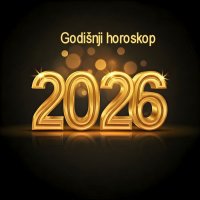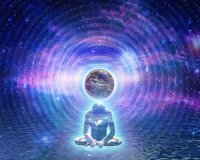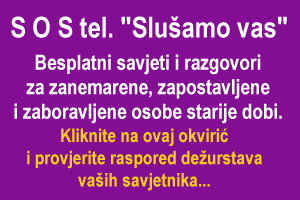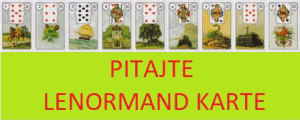Peircean sign time thus not only allows to reconcile the two modi of time, the experiential time and referential time. It is also possible to extend the same process into historical time, rooting historicity in an alternative and much more appealing manner than it was proposed by Heidegger.
Wittgenstein
All the positions we met so far can be split into two sets. In the first part we find fundamental ontology and existential philosophy (Heidegger), analytic ontology (Oaklander), “folk approaches” (Augustine), idealistic conceptions (McTaggart) and physics with its reductionist perspective . In the second subset we find Aristotle, Bergson and Peirce.
The difference between the two parties lies in the way they root the concept of time. The former party roots it in reality; hence they ask about the inner structure of time, much like one would ask about the inner structure of wood. For the proponents of the second class time is primary experiential time and such always rooted in the interpretant, i.e. some kind of active observer, whether this refers to observers with or without consciousness. For all of them, though in different ways, the present is primary. For Aristotle it is kind of a substance, for Bergson durée, for Peirce the sign as process.
Wittgenstein does not say much time, since he seems to be convinced that there is not so much to say. He simply accepts the distinction between referential time of physics and experiential time and considers them to be incommensurable. [39]
Both ways of expressing it are okay and equitable, yet not blendable.23 ([40], p.81-82)
Already in the Tractatus, Wittgenstein wrote
We cannot compare any process with the “passage of time”—there is no such thing—but only with another process (say, with the movement of the chronometer).24 (TLP 6.3611)
Here it becomes clear that clock-time is nothing “built into matter”, but rather a communally negotiated reference, or in short, referential time. We all refer to the same particular process, whether this is length of a day or the number of state changes in Cs-133.25 Experiential time, on the other hand, can’t be considered as a geometrical entity, hence there is no such thing as a “point” in present. In experience, there is nothing to measure. The main reason for this being that experience is tightly linked to (abstract) modeling, and thus to the choreosteme. In short, experience is a self-generating process without an Archimedean Point.
“Now” does not denote a point in time. It is not a “name of a moment in time.”26 ([43], 157)
[…] yet it is nonsense to say ‚This is this‘, or ‚This is now‘.27 ([43], 159)
„Now“ is an indexical term, just as „I“, „this“ or „here“. Indexical terms do not refer to an index. Quite in contrast, sometimes, in more simple cases, they are setting an index, in more complicated cases indexical terms just denote the possibility for imposing an index onto a largely indeterminate context. Hence, it is for grammatical reasons that we can’t say “this is now.” Time is not an object. Time is nothing of which we could say that it does exist. Thus we also can not ask “What is time?” as this implies the existentialist perspective. The question about the reality of time is ungrammatical, it is like trying to play Chinese checkers28 on a chess board, or chess on a soccer field.
More precisely, there is no possibility to speak about “time as an object” in meaningful terms. For language is (i) a process itself, (ii) a process that intrinsically relates to the communal (there is no private language), and (iii) language is a strongly singular term. Thus we can conclude that there is no such thing as the objectification of time, or objective time.
Examples for such an objectification are easy to find. For instance, it is included in the question posed by Augustine “What is time?” (Wittgenstein’s starting point for the Philosophical Investigations.) It is also included in the misunderstanding of an objective referential time. Or in the claim that time itself is flowing (like a river). Or in the attempt to proof that time itself is continuous.29
Instead, “now” is used as an indication of—or a pointer to—the present and the presence of the speaker. Its duration in terms of clock-time is irrelevant. It would be nonsense to attempt to measure this duration, because it would mean to measure the speaker and his act itself.
Accordingly, the temporal modi in language, the tenses, such as past, present time, future, reflect to the temporal modi of actions—including speech acts—, which take place in the “now” and are anchored in the future through their purpose ([42] p.142).
Confusing and mixing the two conceptions of time—referential time and experiential time—is the main reason, according to Wittgenstein, for enigmas and paradoxes regarding time (such as the distinction of A-series and B-series by McTaggart and in ontology).
For there is no such thing as the objectification of time, time is intrinsically a relational “entity”. As Deleuze brilliantly demonstrates in his reflections about Bergson [33], time can be thought only as durée, or in my words, as a manifold of anobjected time strings, that directly points to the virtual, which in turn is not isolated, but rather an intensity within the choreosteme.
The idealistic, phenomenological and existential approaches to temporality are deeply flawed, because it is not possible to take time apart, or to take time out of the game. Wittgenstein considers such attempts as a misuse of language. Expressions like „time itself“ or questions like “What is time?” are outside of any possible language.
In the ‘Philosophical Remarks’ he says
What belongs to the essence of the world could not be expressed by language. Only what we could imagine as being different language is able to tell.30 ([40] p.84).
Everything which we are able to describe at all, could also be different.31 ([45],p .173).
In order to play the game of “questioning reality of X” in a meaningful manner it has to be possible that it is not real, or partially. An alternative is needed, which however is missing in existential questions or attempts to find the essence. Thus it is meaningless (free of sense) to doubt (even implicitly) the reality of time, whether as present, as past or as future. It is similar to Moore’s paradox of doubting of having an arm. In the end, at least after Wittgenstein, one always have to begin with language. It is nonsense to begin with existence, or likewise essence.
Wittgenstein rejects the traditional philosophical reflection that always tried to find the eternal, necessary and general truth, essence or “true nature” as opposed to empirical—and pragmatical—impressions. The attempt to determine the reality of X as a being-X-as-such is a misuse of language, it is outside of the logic of language.
For Wittgenstein, the more interesting part of time points to memory, as clock-time is a mere convention. For him, memory is the sourcing wellspring (“Quelle”) of time, since the past is experienceable just as a recall of the past ([40] p.81f). Bergson called it recollection.
I think that there are one major consequence of Wittgenstein’s considerations. Time can be comprehended only as a transcendent structural condition of establishing a relation, hence also acting, speaking and thinking. Without such conditioning it is simply not possible to establish a relation. This extends, of course, also to the realm of the social [46]. Here we could even point to physics, particularly to the maximum speed of light, that is the maximum speed of exchanging information, which translates to the “establishment of time” as soon as a relation has been built. This includes that this building of a relation is irreversible. Within reversibility it does not make sense to speak about time. Even shorter, we could be tempted to say that within information there is no time, if it would be meaningful to think something like “within information”. Information itself is strictly bound to interpretation, which brings us back to Peircean semiotics.
Such we could say that we as humans “create” time mainly by means of language, albeit it is not the only possibility to “create” time. Yet, for us humans (as a collective individual beings32) there is hardly another possibility, for we can’t step out of language. Different languages and different uses of language “create” different times. It is this what Helga Nowotny calls “Eigenzeit” [46] (“self-owned time”).
It is rather important to understand that by means of these argument we don’t refer any more to something like “historical time” or “natural time”. Our argument is much more general.
Secondarily, then, we may conclude that we have to ask about the different ways we use the language game “time”.
Ricoeur
As other authors Paul Ricoeur proposes a strict discontinuity between historical time (“historicality”) and physical time. The former he also calls “time with present”, the latter “time without present.” Yet, unlike other authors he also proposes that this discontinuity can’t be reconciled or bridged. This hypothesis he proceeds to formulate by means of three aporias [47].
- Aporia 1, duality: Subjective time and objective time can’t be thought together in a single conception, and even more, they obscure them mutually.
- Aporia 2, false unity: Despite we take it for granted that there is one single time, we can’t justify it. We even contradict the insight—which appears as trivial—that there is subjective and objective time.
- Aporia 3, inscrutability: Thought can not comprehend time, since its origin can’t be grasped. Conceptually, time is ineluctable. Whenever philosophical thought starts to think about time, this thinking is already too late.
Ricoeur is the second author in our selection who takes a phenomenological stance. Heidegger’s “Being and Time” serves as his point of reference. Yet, Ricoeur is neither interested in the analysis of Being nor of the having-Been. The topic to which he refers in Heidegger, and at the same time his vantage point, is historicality, which he approaches in a very different manner. For Ricoeur, history and historicality can not only be understood just through narrativity; there is even a mutual structural determination. Experience of time as the source of historicality as well as the soil of it gets refigurated through narration. In the essay “On Narrative” [49] that he published while his major work “Time and Narration” [48] was in the making we can find his main hypothesis:
My […] working hypothesis is that narrativity and temporality are closely related—as closely as, in Wittgenstein’s terms, a language game and a form of life. Indeed, I take temporality to be that structure of existence that reaches language in narrativity and narrativity to be the language structure that has temporality as its ultimate referent. Their relationship is therefore reciprocal. (p.169)
Concerning narrativity, Ricoeur draws a lot, of course, on the structure of language and the structure of stories. On both levels various degrees of temporality and nonchronological proportions appear. On the level of language, we find short-range and long-range indicators of temporality, beyond mere grammar. Long-range indicators such as “while” or adverbs of time (“earlier”) do not have a clear boundary, neither structurally nor semantically. The same can be found on the level of the story, the plot as Ricoeur calls it. Here he distinguishes a episodic from a configurational dimension, the former presupposing ordinary, i.e. referential time. Taking into account that
To tell and to follow a story is already to reflect upon events in order to encompass them in successive wholes. (p.178)
it follows that any story comprises a
[…] twofold characteristic of confronting and combining both sequence and pattern in various ways.
In other words, a story creates a multiplicity of possible sequences and times, thereby opening a multiplicity of “planes of manifestation,” or in other words, a web of metaphors33.
[…] the narrative function provides a transition from within-time-ness to historicality.
Yet, according to Ricoeur the configurational dimension of the story has a particular effect on the ordinary temporality of a story as it is transported by the episodics. Through the triggered reflective act, the whole story may condense into a single “thought”.
Finally, the recollection of the story governed as a whole by its way of ending constitutes an alternative to the representation of time as moving from the past forward into the future, according to the well-known metaphor of the arrow of time. It is as though recollection inverted the so-called natural order of time. […] A story is made out of events to the extent that plot makes events into a story. The plot, therefore, places us at the crossing point of temporality and narrativity.
This single thought, the plot of a story as whole now is confronted particularly with the third aporia of inscrutability. Basically, for Ricoeur “not really thinking time” when thinking about time is aporetic. (fTR III 467/dZE III, 417) The aporia
[…] emerges right in that moment, where time, which eludes any attempt to be constituted, turns out to be associated to a constitutive order, which in turn always and already is assumed by the work of that constitution.
Any conception that we could propose about time is confronted with the impossibility of integrating this reflexively ineluctable reason. We never can subject time as an object of our reflexions completely. Inga Römer emphasizes (p.284)
Yet, and this is a crucial point for Ricoeur, “what is brought to its failure here is not thinking, in all its meanings, but rather the drive, better the hubris that our thinking seduces to attempt to dominate sense”. For this failure is only a relative one, the inscrutability is not faced with a lapse into silence, but rather with a polymorphy of arrangements and valuations.34
The items of this polymorphy are incommensurable for Ricoeur. Now, for Ricoeur this polymorphy of time experience is situated in a constitutive and reciprocal relationship with narrativity (see his main hypothesis in “On Narrative” that we cited above). Thereby, our experience of time refigurates and reconfigurates itself continuously. In other words, narration represents a practical and poetic mediation of heterogeneous experiences of time. This interplay, so Ricoeur, can overcome the limitations of philosophical inquiries of time.
Interestingly, Ricoeur rejects any systematicity of his arguments, as Römer points out: (p.454)
This association of withdrawal of grounds at the one hand and the challenge for a thinking-more and thinking-different is the strongest argument for Ricoeur’s explicit refusal of a system regarding the three aporias of time as well as their narrative answers.35 (p.454)
The result of this is pretty clear. The Ricoeurean aporetics starts to molt itself into a narration, constantly staggering and oscillating between its claiming, its negation, its negative positivity and its positive negativity, beginning to dazzle and getting incomprehensible.
Temporality tends to get completely merged in narrativity, which in turn becomes synonymous with the experience of time. Such, there are only two possibilities for Ricoeur, neither of which he actually did follow. The first is the denial of temporality that could be thought independent of narration. The second would be that life is equated with narration.
I think, Ricoeur would favour the second alternative. As Römer summarizes:
Historical practice allows us to mediate experienced time with linear time in its own creation, the historical time.36 (p.326)
Such, however, Ricoeur would introduce a secondary re-mystification, which actually is even an autolog one, since Ricoeur has been starting with it as an inscrutability. At this point, all his arguments vanish and turn into a simple pointing to experience.
In the end, the notion of historical practice remains rather questionable. Ricoeur uses the concepts of witness or testimony as well as “trace,” which of course reminds to Derrida’s infamous trace: an uninterpretable remnant of history. Despite Ricoeur emphasizes the importance of the reader as the situs of the completion of text, he never seems to accept interpretation as a primacy. Here, he closely follows the inherited phenomenological misconceptions of the object that exists independent from and outside of the subject. Other difficulties of it is the denial of transcendence and abstraction, which together with its logicism causes the wrong problem of freedom. Phenomenology never understood, whether in Husserl, Heidegger, Derrida, Ricoeur or analytic philosophy, that comparing things can’t take place on the same level as the compared things. Even the most simple comparison implies the Differential, requiring a considerable amount of constructive activity.
Outside phenomenology, Ricoeur’s attempt is only little convincing, albeit he describes many interesting observations around narration and texts. His aporetics of time appears half-baked, through and through, so to speak. Poisoned by phenomenology, and strangely enough forgetting about language in the formulation of his aporias, he commits almost all of the possible mistakes already in his premises. He objectifies time and he treats it as an existential, which could be explained. After all, his main objection that we “can’t really think time”, does not hit a unique. case. Any thinking of any concept is unable to “really think it.”
Our conclusion is not a rejection of Ricoeur’s basic idea of a mutual relationship between “thinking time” and narration. Yet, obviously thinking about narration and phenomenology is an impossibility itself.
One of interesting observations around narration is the distinction between the episodic and the configurational dimension of a plot. This introduces multiplicity, reversibility, and extended present as well as an additional organizational layer. Yet, Ricoeur failed to step out of his affections with narration in order to get aware of the opportunities attached to it.
Kant
Introducing transcendence into our game, we have to refer to Kant, of course, and his conception of time in his “Transzendentale Ästhetik der Kritik der reinen Vernunft”. Kant’s merit is the emancipation of transcendental thinking from the imagined divinity, albeit he did not push this move far enough.
By no means Kant demonstrated the irreality of time, as Einstein as well as McTaggard boldly claim. Kant just demonstrated that time can’t “have” a reality independent from a subject. Accordingly, the idea of an illusionary or irreal time itself is based on a fiction: the fiction of naïve realism. It claims that there is the possibility of an access to “nature” in a way that is independent of subject. Conversely, this does not mean that time as a reality is constructed by human thinking, of course.
The reason for misunderstanding Kant lies in the fact that Kant still argues completely within the realm of the human, while physicists like Einstein talk about the fiction of primarily unrelated entities. It is a major methodological element of the theoretic constitution of physics to assume so, in order to become able, so the fiction, to describe the relations then objectively. Well, actually this does not make much sense, yet physicists usually believe in it.
Far from showing that time is illusionary, Kant tried to secure the objectivity of time under conditions of empirical constitutions, that is, after the explicit and final departure from still scholastic pre-established harmonies that are guaranteed by God. In order to accomplish that he had to invent kind of an intrinsic transcendentality of empirical arrangements. This common basis he found in the transcendent sensual intuition.
For Kant time is a form of intuition (Anschauung), or more precisely, a transcendental and insofar pure form of sensual intuition. It is however of utmost importance, as Mike Sandbothe writes, that Kant himself relativized the universality that is introduced by the transcendentality of time, or in still other words, the intuition of the transcendental subject.
[…] die Form der Anschauung bloss Mannigfaltiges, die formale Anschauung aber Einheit der Vorstellung gibt.” ([47]p.154, B 160f)
The formal account in the intuition now refers to the use of symbols. Thus, it can’t be covered completely as a subject by the pure reason. Here, we find a possible transition to Wittgenstein, since symbols are symbols by convention. Note that this does not refer to a particular symbol, of course, but to the symbolicity that accompanies any instance of talking about time. On the one hand this points towards the element of historicity, which has been developed by Heidegger in a rather limited manner (because he restricted history to the realm of the Dasein, i.e. consciousness).
On the other hand, however, we could extend Kant’s insight of a two-fold constitution of time into more abstract, and this means a-human regions. In a condensed way Kant shows that we need sensual intuitions and symbolicity in order to access temporal aspects of the world. Sensual intuitions, then, require, in the widest sense, kind of match between sensed and the sensing. In human thinking these are the schemata, in particle physics it is the filter built deeply into matter. We could call this transverse excitability. In physics, it is called quantum.
Yet, the important thing is the symbolicity. We can immediately translate this into quantificability and quantitability. And again we are back at Aristotle’s conception.
2. Synopsis
So, after having visited some of the most important contributions to the issue of time we may try to approach a synopsis of those. Again, we have to emphasize that we disregarded many highly interesting ideas, among others those of Platon in his Timaios with his three “transcendental” categories of Being, Space and Becoming, or those of Schelling (cf. in [31]); or those of Deleuze in his cinema books, where he distinguished the “movement image” (presupposing clock time) from the “time image” that is able to provide a grip onto “time itself,” which, for Deleuze, is the virtual to which Bergson’s durée points to; likewise, any of the works by the authors we referred to should have been discussed in much more detail in order to do justice to them. Anyway.
Our intermediate goal was to liberate time from its human influences without sacrificing the applicability of the respective conception to the realm of the human. We need to do so in order to investigate the relation between time and architecture. This liberation, however, still has to obey to the insight of Wittgenstein that we must not expect to find an “essence” of time. Taking all the aspects together, we indeed may ask, as careful as possible,
How should we conceive of time?
The answer is pretty clear, yet, it comes as a compound consisting of three parts. And above all it is also pretty simple.
(1) Time is best conceived as a transcendent condition for the possibility of establishing a relation.
This “transcendent condition” is not possible without a respective plane of immanence, which in turn comprises the unfolding of virtuality. Much could be said about that, of course, with respect to the philosophical implications, its choreostemic references, or its architectonic vicinity. For instance, this determination of time suggests a close relationship to the issue of information and its correlate, causality. Or we could approach other conceptions of time by means of something like a “reverse synthesis.”
It is perhaps at least indicated to emphasize—particularly for all those that are addicted to some kind of science—that this transcendent condition does not, by no means, exclude any consideration of “natural” systems, even not in its material(ist) contraction. On the other hand, this in turn does not mean, of course, that we are doing “Naturphilosophie” here, neither of the ancient nor the scholastic type.
It is clear that we need to instantiate the subjects of this conception in order to achieve a practical relevance of it. It is in this instantiation that different forms of temporality appear, i.e. durée on the one hand and clock-time on the other. Nothing could be less surprising, now, as an incompatibility of the two forms of temporality. Actually, the expectation of a compatibility is already based on the misunderstanding that claims the possibility of a “direct” comparison (which is an illusion). Quite to the contrast, we have to understand that the phenomenal incommensurability just points to a differential of time, which we formulated as a transcendent condition above.
Now, one of the instantiations, clock-time, or referential time, is pretty trivial. We don’t need to deal with it any further. The other branch, where we find Peirce and Bergson, is more interesting.
As we have seen in our discussion about their works, multiplicity is an essential ingredient of relational time. Peirce and Bergson arrived at it on different ways, though. For Peirce it is a consequence of the multiplicity of thoughts about something, naturally derived from his semiotics. For Bergson, it is a multiplicity within experience, or better the experiencing consciousness. So to speak, they take inverse positions regarding the mediality. We already said that we prefer the Peircean perspective due to its more prominent potential for generalization. Yet, I think the two perspectives could be reconciled quite easily. Both conceptions conceive primal time as “experiential” time (in the widest sense).
Our instantiation of time as a transcendent condition is thus:
(2) Transcendent time gets instantiated as a probabilistic, distributed and manifold multiplicity of—topologically spoken—open time strings.
Each time string represents a single and local present, where “local” does not refer to a “spatial place”, but rather to a particular sign process.
This multiplicity is not an external multiplicity, despite it is triggered or filled from the external. It is also not possible to “count” the items in it, without loosing present. If we count, we destroy the coherence between the overlapping strings of present, thus creating countable referential time. This highlights a further step of instantiation, the construction of expressibility.
(3) The pre-specific multiplicity of time strings decoheres by symbolization into a specific space of expressibility.
Symbolization may be actualized by means of numbers, as already mentioned before. This would allow us to comprehend and speak of movement. We also have seen that we could construct a web of proceeding metaphors and their virtual movement. This would put us in midst the narration and into metaphoricology, as I call it, which refers to the perspective that conceives of being human and of human beings as parts of lively metaphors. In other words, culture itself becomes the story and the narrative.
As still another possibility we could address the construction of a space of expressibility of temporality quite directly. Such a space need to be an aspectional space, of course. Just keep in mind that the aspectional space is not a space of quantities, as it is the case for a Cartesian space. The aspectional space is a space that is characterized by a “smooth” blending of intensity and quantity. We may call it intensive quantities, or quantitable intensities. It is a far-reaching generalization of the “ordinary” space conceptions that we know from mathematics. As the aspects —the replacement of dimensions—of that space we could choose the modes of temporality—such as past, present, future—, the durée, the referential time, or implicit time as it occurs and shows up in behavior or choreostemic space. We also could think of an aspection that is built by a Riemannian manifold, allowing to comprise linearity and circularity as just a single aspect.
The tremendous advantage of such a space is manifold, of course, because an infinite amount of particular time practices can be constructed, even as a continuum. This contiguous and continuous plurality is of a completely different kind as the unmediatable items in the plurality of time conceptions that has been proposed by Mike Sandbothe [8].
The aspectional space of transcendent time offers, I mentioned it, the possibility for expressing time, or more precisely, a particular image of time. There are several of those spaces, and each of them is capable to hold an infinite number of different images of time.
It is now easy to understand that collapsing the conditions for building relations with the instantiation into a concrete time form, or even with the action (or the “phenomenon”) results in nothing else than a terrible mess. Actually, it is precisely the mess that physicists or phenomenology create in different ways. “Phenomenal” observables of this mess are pseudo-paradoxes or dualities. We also could say that such mess is created due to a wrong application of the grammar of time.
There is one important aspect of time and temporality, or perspective onto them, that we mentioned only marginally so far, the event. We met it in Heidegger’s “Being and Time” as the provider [m: the Giving] and insofar also the origin of Being and time. We also saw that Ricoeur uses them as building bricks for stories that combine them into successive wholes. For Dewey (“Time and Individuality”, “Context of Thought”) the concept of an event involves both the individual pattern of growth and the environmental conditions. Dewey, as Ricoeur, emphasizes that there is no geometrical sequence, no strict seriality to which events could be arranged. Dewey calls it concurrence, which could not be separated from occurrence of an event.
Yet, for both of them time remains something external to the conception of event, while Heidegger conceives it as the source of time. Considering our conception of time as a proceeding actualization of Differential Time we could say the the concept of event relates to the actualization of the relation within the transcendence of its conditions. Such it could be said to accompany creation of time, integrating transcendent and practical conditions as well as all the more or less contingent choices associated with it. In some way we can see that we have proceduralized (differentiated) Heidegger’s “point of origin”.37. Marc Rölli [52] sharpens this point by referring to Deleuze’s conception as “radically empiricist”, dismissing Heidegger through the concepts of actuality and virtuality. Such we can see that the immediate condition that is embedding the possibility of experience is the “event,” which in turn can be traced back to a proper image of time. Time, as a condition, is mediated towards experience by the event, as a condition. Certainly, however, the “event” could not be thought without an explicitly formulated conception of time. Without it, a multitude of misunderstandings must be expected. If we accept the perspective that insofar time is preceding substance, which resolves of course into a multiplicity in a Deleuzean perspective, we also could say that the trinity of time, event and experience contributes to the foil of immanence, or even builds it up, where experience in turn refers to the choreostemic constitution of being in the world.
In order to summarize our conception as an overview… here is how we propose to conceive of time
(1) Time is a transcendent condition for the possibility of establishing a relation, or likewise a quality.
(2) It gets instantiated as a probabilistic multiplicity of open time strings that, by the completion of all instantiations, present presence.
(3) The pre-specific multiplicity of time strings decoheres by symbolization into a specific, aspectional space of expressibility.
(4) Any particular “choice” of a situs in this space of intensive quantities represents the respective image of time, which then may emerge in worldly actualizations.
Particularly regarding this last element we have to avoid the misunderstanding of a seriality of the kind “I choose then I get”. This choice is an implicit one, just as the other instantiations, and can be “observed” only in hindsight, or more precise, they show themselves only within performance. Only in this way we can say that it brings time into a particular Lebenswelt and its contexts as a matter (or subject) of design.
Nevertheless, we now could formulate kind of a recipe for creating a particular “time”, form of temporality, or “time quality.” This would work also in the reverse direction, of course. It is possible to construct a comparative of time qualities across authors, architects or urban neighborhoods. Hopefully, this will help to improve urban practices. In order to make this creational aspect more clear, we now have to investigate the possibilities to create time “itself”.
to be continued …
(The next part will deal with the question whether it could be possible to identify the mechanisms needed to create time…)
Notes
1. “Living City” was Archigram’s first presentation to the public, which has been curated by Ron Herron in 1963.
2. German orig.: „Zuletzt markiert die Zeit für Ricoeur das “Mysterium” unseres Denkens, das sich der Repräsentation verweigert, indem es unser Dasein auf eine für das Denken uneinholbare Weise umgreift.“
3. As in the preceding essays, we use the capital “U” if we refer to the urban as a particular quality and as a concept in the vicinity of Urban Reason, in order to distinguish it from the ordinary adjective that refers to common sense understanding.
4. remark about state and development.
5. We discussed them in the essay about growth patterns. The fractal is a consequence of self-affine mapping, roughly spoken, a local replacement by a minor version of the original diagram.
6. It is tempting to relate this position to Heisenberg’s uncertainty principle. Yet, we won’t deal with contemporary physics here, even as it would be interesting to investigate the deficiencies of physical conceptions of time.
7. McTaggart paper about time that has been cited over and over again and became unfortunately very influential. Yet, it is nothing but a myth. For a refutation see Tegtmeier [18]. For reasons of its own stupidity and the boldly presented misinterpretation of the work of Kant, McTaggart’s writing deserves the title of a “most developed philanosy” (Grk: anoysia ανοησία, nonsense, or anosia, immunity). It is not even worthwhile, as we will see later through our discussion of Wittgenstein’s work regarding time, to consider it seriously, as for instance Sean Power does .
8. There is a distant resemblance to Georg Berkley’s “esse est percipi.” [20] Yet, in contrast to Berkley, we conceive of interpretation as an activity that additionally is deeply rooted in the communal.
9. German original: SZ: 326: „Zukünftig auf sich zurückkommend, bringt sich die Entschlossenheit gegenwärtigend in die Situation. Die Gewesenheit entspringt der Zukunft, so zwar, dass die gewesene (besser gewesende) Zukunft die Gegenwart aus sich entlässt. Dies dergestalt als gewesend-gegenwärtigende Zukunft einheitliche Phänomen nennen wir die Zeitlichkeit.“
10. One has to consider that Heidegger conceives of Being only in relation to the Being-there (“Dasein”), while the “Being-there” is confined to conscious beings.
11. The translators used ”falling”, which however does not match the German “verfallend”. (Actually, I consider it as a mistake.) Hence, I replaced it by a more appropriate verb.
12. Note that Heidegger always used to write in a highly ambigue fashion, which makes it nearly impossible to translate him literally from German to English. In everyday language “Es gibt” is surely well translated by “There is.” Yet, in this text he repeatedly refers to “giving”. Turning perspective to “giving” opens the preceding “Es” away from its being as impersonate corpuscle towards impersonal “fateness”. This interpretation matches the presentation of the affair in [24].
13. German original: “Das Sein eigens denken, verlangt, das Sein als den Grund des Seienden fahren zu lassen zugunsten des im Entbergen verborgen spielenden Gebens, d.h. des „Es gibt“.“
14. see also: Marcel Mauss, Die Gabe. Form und Funktion des Austauschs in archaischen Gesellschaften. Suhrkamp, Frankfurt 2009 [1925].
15. German orig.: „In “Zeit und Sein” schliesslich sieht Heidegger den Ursprung der Zeit im Ereignis, welches er ausdrücklich als den [sich ] selbst entzogenen Geber von Sein und Zeit bestimmt. Das Ereignis, von Heidegger andernorts bestimmt als singulare tantum, ist selbst grundsätzlich entzogen – und dennoch ist das Ereignis der Ursprung der Zeit.“
16. German original (my own translation): “Sein und Zeit ist vielmehr dahin unterwegs, auf dem Wege über die Zeitlichkeit des Daseins in der Interpretation des Seins als Temporalität einen Zeitbegriff, jenes Eigene der “Zeit” zu finden, von woher sich “Sein” als Anwesen er-gibt. Damit ist aber gesagt, daß das in der Fundamentalontologie gemeinte Fundamentale kein Aufbauen darauf verträgt. Stattdessen sollte, nachdem der Sinn von Sein erhellt worden wäre, die ganze Analytik des Daseins ursprünglicher und in ganz anderer Weise wiederholt werden.“ [21]
17. German original (my translation): “Zeit-Raum nennt jetzt das Offene, das im Einander-sich-reichen von Ankunft, Gewesenheit und Gegenwart sich lichtet. Erst dieses Offene und nur es räumt dem uns gewöhnlich bekannten Raum seine mögliche Ausbreitung ein.“
18. This also holds for any of the attempts hat can be found in physics. The following sources may be considered as the most prominent sources, though they are not undisputed: Carroll [22], Price [23][24], Penrose [25]. Physics always and inevitably conceives of time as a measurable “thing”, i.e. as something which already has been negotiated in its relevance for the communal aspects of thinking. See Aristotle’s conception of time.
19. hint to Schelling, for whom intensity is not accessible at all, but could be conceived only as a force that expands into extensity.
20. You will find Peirce’s writings online here: http://www.cspeirce.com/; the parts reference here for instance at http://www.cspeirce.com/menu/library/bycsp/logic/ms237.htm,
21. German original (my transl.): „Denn in der Grammatik der Zukunft tritt der Begriff des ,Gedächtnis’ nicht auf, auch nicht mit umgekehrten Vorzeichen.“
22. In meditational practices one can extend the interpretive chain in various ways. The result is simply the stopping of referential time.
23. German orig.: „Beide Ausdrucksweisen sind in Ordnung und gleichberechtigt, aber nicht miteinander vermischbar“.
24. German orig.: „Wir können keinen Vorgang mit dem ,Ablauf der Zeit’ vergleichen – diesen gibt es nicht – sondern nur mit einem anderen Vorgang (etwa mit dem Gang des Chronometers).“ translation taken from here.
25. 1 second is currently defined as the duration of 9192631770 transitions between two energy levels of the caesium-133 atom. [39] Interestingly, this fits nicely to Aristotle’s conception of time. The reason to take the properties of Cs-133 as a reference is generality. The better the resolution of the referential scale the more general it could be applied.
26. German orig.: „„Jetzt“ bezeichnet keinen Zeitpunkt. Es ist kein „Name eines Zeitmomentes“.“
27. German orig.: „[…] es ist aber Unsinn zu sagen ‘Dies ist dies’, oder ‘Dies ist jetzt’.“
28. In German “Halma”.
29. Much could be said about physics here, regarding the struggling of physicists to “explain” the so-called arrow of time, or regarding the theory of relativity or quantum physics with its Planck time, but it is not close enough to our interests here. Physics always tries to objectify time, which happens through claiming an universally applicable scale, hence they run into paradoxes. In other terms, the fact of the necessity of conceptions like Planck time, or time dilatation, is precisely that without observer there is nothing. The mere possibility of observation (and the observer) vanishes at the light of speed, or at the singularity “within” black holes”. In some way, physics all the time (tries to) proof(s) their own nonsensical foundations.
30. German orig.: „Was zum Wesen der Welt gehört, kann die Sprache nicht ausdrücken. (…) Nur was wir uns auch anders vorstellen können, kann die Sprache sagen.”
31. German orig.: ,,Alles was wir überhaupt beschreiben können, könnte auch anders sein”.
32. Note that in case of a city we meet somewhat the inverse of it. We could conceive of a city as “an individual being made from a collective.”
33. see also Paul Ricoeur (1978), “The Metaphorical Process as Cognition, Imagination, and Feeling,” Critical Inquiry, 1978.
34. German orig.: „Aber, und das ist für Ricoeur entscheidend, “was hier zum Scheitern gebracht wird, ist nicht das Denken, in allen Bedeutungen des Wortes, sondern der Trieb, besser die hybris, die unser Denken dazu verleitet, sich zu Herrn des Sinns zu machen“. Aufgrund dieses nur relativen Scheiterns stehe der Unerforschlichkeit kein Verstummen, sondern vielmehr eine Polymorphie der Gestaltungen und Bewertungen der Zeit gegenüber.“
35. German orig.: „Diese Zusammengehörigkeit von Entzug des Grundes und Herausforderung um Mehr- und Andersdenken ist der stärkste Grund für Ricoeurs explizite Ablehnung eines Systems sowohl der drei Aporien der Zeit selbst wie auch ihrer narrativen Antworten.“
36. German orig.: „Historische Praxis erlaubt uns, die erlebt Zeit mit der linearen Zeit in einer ihr eigenen Schöpfung, der historischen Zeit, zu vermitteln.“
37. Much more would be to say about the event, of course (cf. [51]). Yet, I think that our characterization not only encompasses most conceptions or fits to most of the contribution to the “philosophy of the event,” it also clarifies and sheds light (kind of x-rays?) on them.
References
[1] Simon Sadler, Archigram – Architecture without Architecture. MIT Press, Boston 2005.
[2] Koolhaas, Junkspace
[3] Robert Venturi, Complexity and Contradiction in Architecture. 1977 [1966].
[4] Bernard Tschumi, Architecture and Disjunction. MIT Press, Boston 1996.
[5] Franz Oswald and Peter Baccini, Netzstadt: Einführung zum Stadtentwerfen. Birkhäuser, Basel 2003.
[6] Sigfried Giedion, Space, Time and Architecture: The Growth of a New Tradition. 1941.
[7] Aldo Rossi, The Architecture of the City. Oppositions 1984 [1966].
[8] Mike Sandbothe, „Die Verzeitlichung der Zeit in der modernen Philosophie.“ in: Antje Gimmler, Mike Sandbothe und Walther Ch. Zimmerli (eds.), Die Wiederentdeckung der Zeit. Primus & Wissenschaftliche Buchgesellschaft, Darmstadt 1997. available online.
[9] Mary Louise Gill, Aristotle’s Distinction between Change and Activity. in: Johanna Seibt (ed.), Process Theories: Crossdisciplinary Studies in Dynamic Categories. p.3-22.
[10] Yeonkyung Lee and Sungwoo Kim (2008). Reinterpretation of S. Giedion’s Conception of Time in Modern Architecture – Based on his book, Space, Time and Architecture. Journal of Asian Architecture and Building Engineering 7(1):15–22.
[11] Tony Roark, Aristotle on Time: A Study of the Physics.
[12] Werner Heisenberg, Physics and Philosophy. The Revolution in Modern Science. Harper, New York 1962.
[13] Ursula Coope, Time for Aristotle, Oxford University Press, 2005.
[14] John Ellis McTaggart (1908). The Unreality of Time. Mind: A Quarterly Review of Psychology and Philosophy 17: 456-473.
[15] L. Nathan Oaklander, Quenin Smith (eds.), The New Theory of Time. Yale University Press, New Haven (CT) 1994.
[16] L. Nathan Oaklander (2004). The Ontology of Time (Studies in Analytic Philosophy)
[17] Sean Power, The Metaphysics of Temporal Experience. forthcoming.
[18] Erwin Tegtmeier (2005). Three Flawed Distinctions in the Philosophy of Time. IWS 2005.
[19] Thomas Sheehan, “Heidegger, Martin (1889-1976)” in: Edward Craig (ed.), Routledge Encyclopedia of Philosophy, Routledge, New York 1998, IV, p.307-323.
[20] George Berkley, Eine Abhandlung über die Prinzipien der menschlichen Erkenntnis (1710). Vgl. vor allem die ‚Sectionen‘ III-VII und XXV, Übers. F. Überweg, Berlin 1869.
[21] Martin Heidegger, Being and Time. transl. John Macquarrie & Edward Robinson (based on 7th edition of “Sein und Zeit”), Basil Blackwell, Oxford 1962. available online.
[22] Martin Heidegger, Sein und Zeit. Tübingen 1979 [1927].
[23] Martin Heidegger, Protokoll zu einem Seminar über den Vortrag “Zeit und Sein”. in: Zur Sache des Denkens. Gesamtausgabe Band 14, p.34. Klostermann, Frankfurt 2007 [1967].
[24] Cristina Lafont (1993). Die Rolle der Sprache in Sein und Zeit. Zeitschrift für philosophische Forschung, Band 47, 1.
[25] Martin Heidegger, Zur Sache des Denkens. Gesamtausgabe Band 14. Klostermann, Frankfurt 2007.
[26] Christian Bermes, Ulrich Dierse (eds.), Schlüsselbegriffe der Philosophie des 20. Jahrhunderts. Meiner, Hamburg 2010.
[27] Sean Carroll, From Eternity to Here: The Quest for the Ultimate Theory of Time. Oneworld, Oxford 2011.
[28] Huw Price, Time’s Arrow and Archimedes’ Point: New Directions. Oxford University Press, Oxford 1996.
[29] Huw Price (1994). Reinterpreting the Wheeler-Feynman Absorber Theory: Reply to Leeds. The British Journal for the Philosophy of Science 45 (4), pp. 1023-1028.
[30] Roger Penrose, The Road to Reality: A Complete Guide to the Laws of the Universe. Vintage, London 2004.
[31] Friedrich Kuemmel, Über den Begriff der Zeit. Niemeyer, Tübingen 1962.
[32] Time and Free Will: An Essay on the Immediate Data of Consciousness, transl., F.L. Pogson, Montana: Kessinger Publishing Company, original date, 1910 (orig. 1889).
[33] Gilles Deleuze, Bergsonism.
[34] Lawlor, Leonard and Moulard, Valentine, “Henri Bergson”, in: Edward N. Zalta (ed.), The Stanford Encyclopedia of Philosophy (Fall 2012 Edition), available online.
[35] Charles Sanders Peirce, Writings 3, 107-108, MS239 (Robin 392, 371), 1873. available online.
[36] Ludwig Wittgenstein, Philosophical Investigations. §201
[37] John Dewey, “Time and Individuality,” in: Jo Ann Boydston (ed.), Later Works of John Dewey, Vol.14. Southern Illinois University Press, Carbondale 1988.
[38] John Dewey, “Experience and Nature,” in: Jo Ann Boydston (ed.), Later Works of John Dewey, Vol.1. Southern Illinois University Press, Carbondale 1981 , p. 92.
[39] Rudolf F. Kaspar und Alfred Schmidt (1992). Wittgenstein über Zeit. Zeitschrift für philosophische Forschung, Band 46(4): 569-583.
[40] Ludwig Wittgenstein, Philosophische Bemerkungen. in: Werkausgabe Bd. 2. Frankfurt 1984.
[41] “International System of Units (SI)”. Bureau International des Poids et Mesures. 2006.
[42] Peter Janich (1996). Die Konstitution der Zeit durch Handeln und Reden. Kodikas/Code Ars Semeiotica 19, 133-147.
[43] Ludwig Wittgenstein, Eine Philosophische Betrachtung (Das Braune Buch). in: Suhrkamp Werkausgabe Bd. 5. Frankfurt 1984.
[44] Andrea A. Reichenberger, „Was ist Zeit?“ Wittgensteins Kritik an Augustinus kritisch betrachtet. in: Friedrich Stadler, Michael Stöltzner (eds.), Papers of the 28th International Wittgenstein Symposium 7-13 August 2005. Zeit und Geschichte – Time and History. ALWS, Kirchberg am Wechsel 2005.
[45] Tagebücher 1924-1916. in: Ludwig Wittgenstein, Werkausgabe Bd.1, Frankfurt 1984.
[46] Helga Nowotny, Eigenzeit: Entstehung und Strukturierung eines Zeitgefühls. Suhrkamp 1993.
[47] Inga Römer, Das Zeitdenken bei Husserl, Heidegger und Ricoeur. Springer, Dordrecht & Heidelberg 2010.
[48] Paul Ricoeur, Zeit und Erzählung, Bd. 3: Die erzählte Zeit, München, Fink , München 1991. (zuerst frz.: Paris 1985).
[49] Paul Ricoeur (1980). On Narrative. Critical Inquiry, Vol. 7, No. 1, pp. 169-190.
[50] Immanuel Kant, Kritik der reinen Vernunft, in: Wolfgang Weischedel (ed.), Immanuel Kant., Werke in sechs Bänden, Bd. 2, Wissenschaftliche Buchgesellschaft, Darmstadt 1983.
[51] Marc Rölli, Ereignis auf Französisch. Von Bergson bis Deleuze. Fink, München 2004.
[52] Marc Rölli, “Begriffe für das Ereignis: Aktualität und Virtualität. Oder wie der radikale Empirist Gilles Deleuze Heidegger verabschiedet”, in: Marc Rölli (ed.), Ereignis auf Französisch. Von Bergson bis Deleuze. Fink, München 2004






































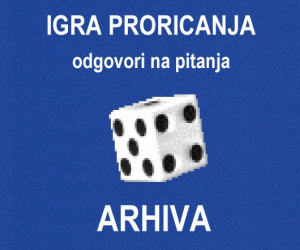








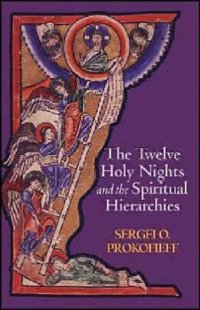

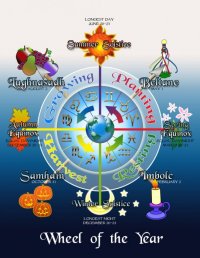




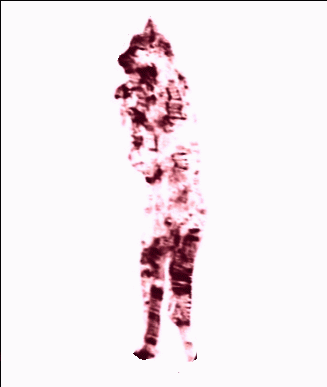 edin.kecanovic
edin.kecanovic irida
irida bglavac
bglavac
